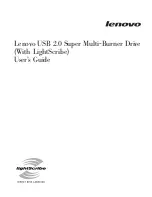
Chapter
5
Reflected Wave
This chapter discusses the reflected wave phenomenon and its impact on
drive systems.
Description
The inverter section of a drive does not produce sinusoidal voltage, but
rather a series of voltage pulses created from the DC bus. These pulses
travel down the motor cables to the motor. The pulses are then reflected
back to the drive. The reflection is dependent on the rise time of the drive
output voltage, cable characteristics, cable length and motor impedance. If
the voltage reflection is combined with another, subsequent pulse, peak
voltages can be at a destructive level. A single IGBT drive output may have
reflected wave transient voltage stresses of up to twice (2 pu or per unit) the
DC bus voltage between its own output wires. Multiple drive output wires in
a single conduit or wire tray further increase output wire voltage stress
between multi-drive output wires that are touching. Drive #1 may have a (+)
2 pu stress while drive #2 may simultaneously have a (-) 2 pu stress.
Effects On Wire Types
Wires with dielectric constants greater than 4 cause the voltage stress to
shift to the air gap between the wires that are barely touching. This electric
field may be high enough to ionize the air surrounding the wire insulation
and cause a partial discharge mechanism (corona) to occur. The electric
field distribution between wires increases the possibility for corona and
greater ozone production. This ozone attacks the PVC insulation and
produces carbon tracking, leading to the possibility of insulation
breakdown.
Based on field and internal testing, Rockwell Automation/Allen-Bradley
has determined conductors manufactured with Poly-Vinyl Chloride (PVC)
wire insulation are subject to a variety of manufacturing inconsistencies
which can lead to premature insulation degradation when used with IGBT
drives. Flame-retardant heat-resistant thermoplastic insulation is the type of
insulation listed in the NEC code for the THHN wire designation. This type
of insulation is commonly referred to as PVC. In addition to manufacturing
inconsistencies, the physical properties of the cable can change due to
environment, installation and operation, which can also lead to premature
insulation degradation. The following is a summary of our findings:
Due to inconsistencies in manufacturing processes or wire pulling, air voids
can also occur in the THHN wire between the nylon jacket and PVC
insulation. Because the dielectric constant of air is much lower than the
dielectric constant of the insulating material, the transient reflected wave
voltage might appear across these voids. If the corona inception voltage
Summary of Contents for Allen-Bradley 1305-AA02A
Page 4: ...ii Summary of Changes Notes ...
Page 40: ...2 18 Power Distribution Notes ...
Page 48: ...3 8 Grounding Notes ...
Page 68: ...4 20 Practices Notes ...
Page 78: ...6 8 Electromagnetic Interference Notes ...
Page 94: ...Glossary 4 UL Underwriters Laboratories ...
Page 100: ...Index 6 ...
Page 101: ......
















































